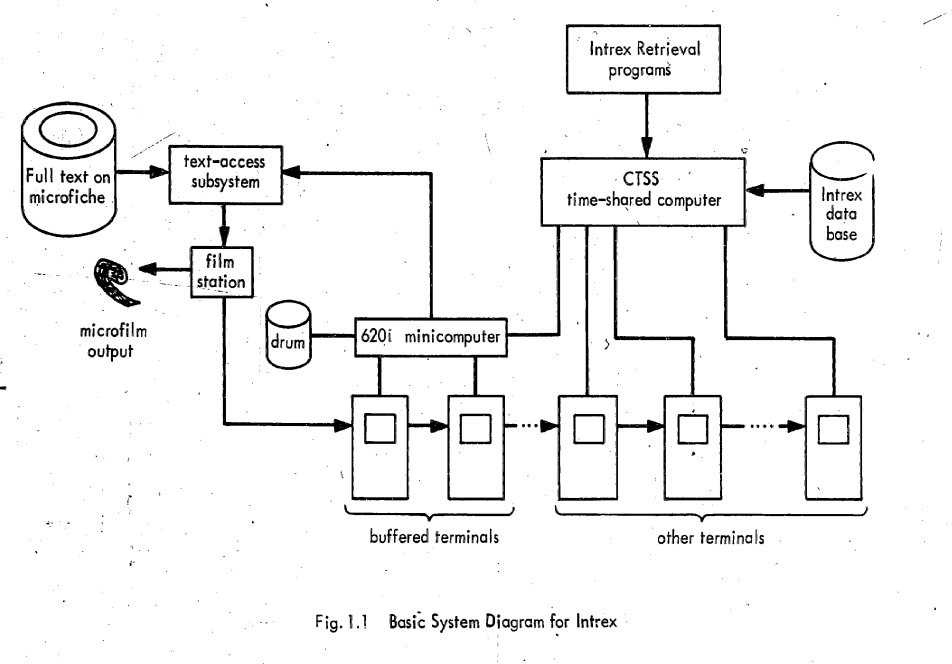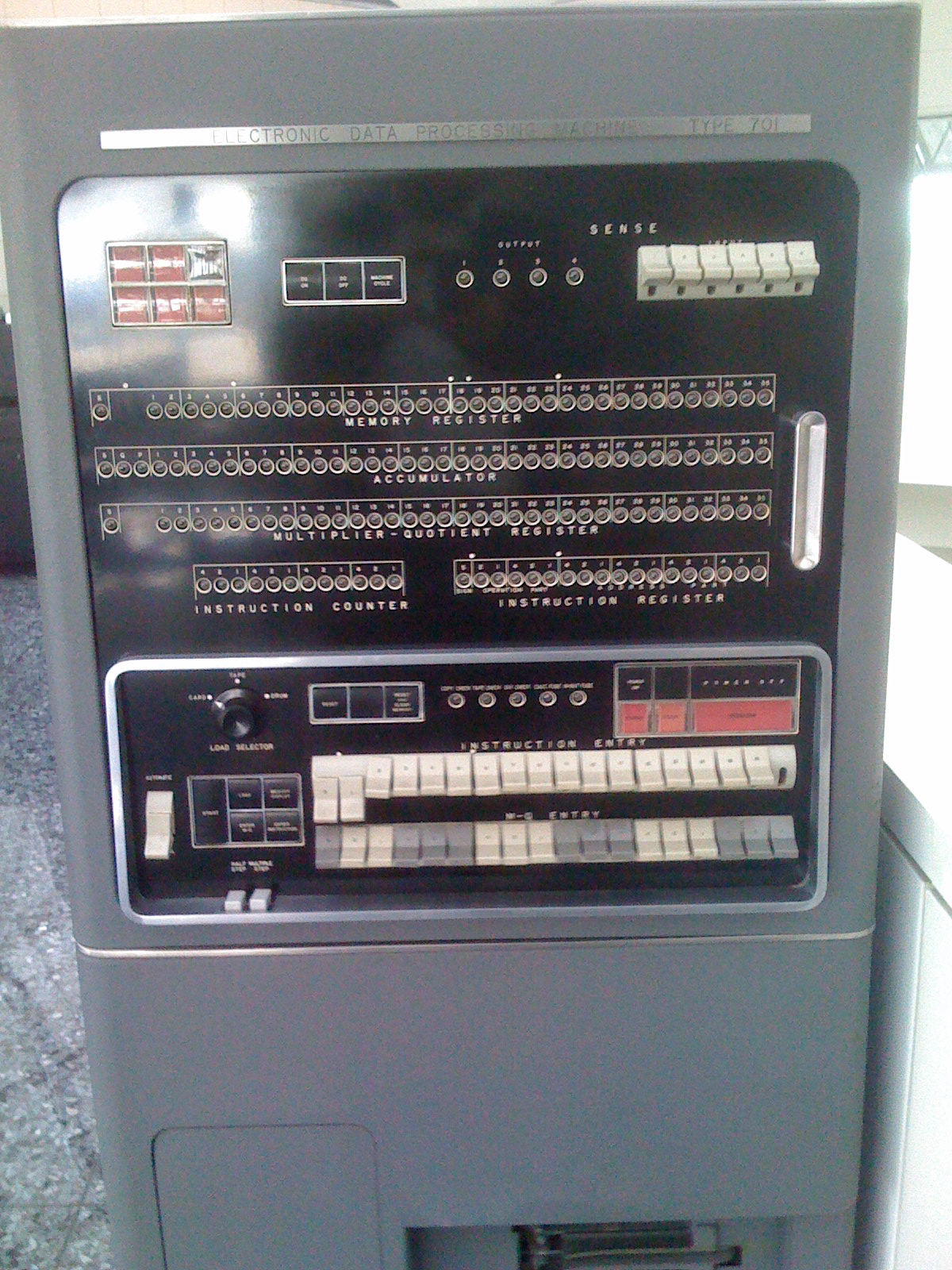|
COMIT
COMIT was the first string processing language (compare SNOBOL, TRAC, and Perl), developed on the IBM 700/7000 series computers by Dr. Victor Yngve, University of Chicago, and collaborators at MIT from 1957 to 1965. Yngve created the language for supporting computerized research in the field of linguistics, and more specifically, the area of machine translation for natural language processing. The creation of COMIT led to the creation of SNOBOL SNOBOL ("StriNg Oriented and symBOlic Language") is a series of programming languages developed between 1962 and 1967 at AT&T Bell Laboratories by David J. Farber, Ralph E. Griswold and Ivan P. Polonsky, culminating in SNOBOL4. It was one of .... Bob Fabry, University of Chicago, was responsible for COMIT II on Compatible Time Sharing System. References * * * Sammet, J.E. "String and list processing languages", in ''Programming Languages: History and Fundamentals''. . Prentice-Hall. 1969. {{Authority control Text-orien ... [...More Info...] [...Related Items...] OR: [Wikipedia] [Google] [Baidu] |
SNOBOL
SNOBOL ("StriNg Oriented and symBOlic Language") is a series of programming languages developed between 1962 and 1967 at AT&T Bell Laboratories by David J. Farber, Ralph E. Griswold and Ivan P. Polonsky, culminating in SNOBOL4. It was one of a number of text-string-oriented languages developed during the 1950s and 1960s; others included COMIT and TRAC. SNOBOL4 stands apart from most programming languages of its era by having patterns as a first-class data type (''i.e.'' a data type whose values can be manipulated in all ways permitted to any other data type in the programming language) and by providing operators for pattern concatenation and alternation. SNOBOL4 patterns are a type of object and admit various manipulations, much like later object-oriented languages such as JavaScript whose patterns are known as regular expressions. In addition SNOBOL4 strings generated during execution can be treated as programs and either interpreted or compiled and executed (as in the ... [...More Info...] [...Related Items...] OR: [Wikipedia] [Google] [Baidu] |
Compatible Time Sharing System
The Compatible Time-Sharing System (CTSS) was the first general purpose time-sharing operating system. Compatible Time Sharing referred to time sharing which was compatible with batch processing; it could offer both time sharing and batch processing concurrently. CTSS was developed at the MIT Computation Center ("Comp Center"). CTSS was first demonstrated on MIT's modified IBM 709 in November 1961. The hardware was replaced with a modified IBM 7090 in 1962 and later a modified IBM 7094 called the "blue machine" to distinguish it from the Project MAC CTSS IBM 7094. Routine service to MIT Comp Center users began in the summer of 1963 and was operated there until 1968. A second deployment of CTSS on a separate IBM 7094 that was received in October 1963 (the "red machine") was used early on in Project MAC until 1969 when the red machine was moved to the Information Processing Center and operated until July 20, 1973. CTSS ran on only those two machines however there were remote CTSS ... [...More Info...] [...Related Items...] OR: [Wikipedia] [Google] [Baidu] |
Victor Yngve
Victor H. Yngve (July 5, 1920 – January 15, 2012W. John HutchinVictor Yngve obituary aclweb.org; accessed August 15, 2017.) was professor of linguistics at the University of Chicago and the Massachusetts Institute of Technology (1953-1965). He was one of the earliest researchers in computational linguistics and natural language processing, the use of computers to analyze and process languages. He created the first program to produce random but well-formed output sentences, given a text, a children's book called ''Engineer Small and the Little Train''. Most importantly, he showed in computer processing terms why the human brain can only process sentences of a certain kind of complexity, ones that do not exceed a "depth limit" (which has nothing to do with length) of the kind established independently by George Miller with his depth limit of "seven plus or minus two" sentence constituents in memory at any given time. Yngve was also the author of COMIT, the first string proces ... [...More Info...] [...Related Items...] OR: [Wikipedia] [Google] [Baidu] |
TRAC Programming Language
TRAC (for Text Reckoning And Compiling) Language is a programming language developed between 1959–1964 by Calvin Mooers and first implemented on the PDP-1 in 1964 by L. Peter Deutsch. It was one of three "first languages" recommended by Ted Nelson in ''Computer Lib''. TRAC T64 was used until at least 1984, when Mooers updated it to TRAC T84. Language description TRAC is a purely text-based language — a kind of macro language. Unlike traditional ''ad hoc'' macro languages of the time, such as those found in assemblers, TRAC is well planned, consistent, and in many senses complete. It has explicit input and output operators, unlike the typical implicit I/O at the outermost macro level, which makes it simultaneously simpler and more versatile than older macro languages. It also differs from traditional macro languages in that TRAC numbers are strings of digits, with integer arithmetic (without specific limits on maximum values) being provided through built-in ("primitive") fun ... [...More Info...] [...Related Items...] OR: [Wikipedia] [Google] [Baidu] |
Perl
Perl is a family of two High-level programming language, high-level, General-purpose programming language, general-purpose, Interpreter (computing), interpreted, dynamic programming languages. "Perl" refers to Perl 5, but from 2000 to 2019 it also referred to its redesigned "sister language", Perl 6, before the latter's name was officially changed to Raku (programming language), Raku in October 2019. Though Perl is not officially an acronym, there are various backronyms in use, including "Practical Data extraction, Extraction and Reporting Language". Perl was developed by Larry Wall in 1987 as a general-purpose Unix scripting language to make report processing easier. Since then, it has undergone many changes and revisions. Raku, which began as a redesign of Perl 5 in 2000, eventually evolved into a separate language. Both languages continue to be developed independently by different development teams and liberally borrow ideas from each other. The Perl languages borrow featur ... [...More Info...] [...Related Items...] OR: [Wikipedia] [Google] [Baidu] |
IBM 700/7000 Series
The IBM 700/7000 series is a series of large-scale (mainframe) computer systems that were made by IBM through the 1950s and early 1960s. The series includes several different, incompatible processor architectures. The 700s use vacuum-tube logic and were made obsolete by the introduction of the transistorized 7000s. The 7000s, in turn, were eventually replaced with System/360, which was announced in 1964. However the 360/65, the first 360 powerful enough to replace 7000s, did not become available until November 1965. Early problems with OS/360 and the high cost of converting software kept many 7000s in service for years afterward. Architectures The IBM 700/7000 series has six completely different ways of storing data and instructions: *First scientific (36/18-bit words): 701 (Defense Calculator) *Later scientific (36-bit words, hardware floating-point): 704, 709, 7040, 7044, 7090, 7094 *Commercial (variable-length character strings): 702, 705, 7080 * 1400 series (variab ... [...More Info...] [...Related Items...] OR: [Wikipedia] [Google] [Baidu] |
Massachusetts Institute Of Technology
The Massachusetts Institute of Technology (MIT) is a Private university, private Land-grant university, land-grant research university in Cambridge, Massachusetts. Established in 1861, MIT has played a key role in the development of modern technology and science, and is one of the most prestigious and highly ranked academic institutions in the world. Founded in response to the increasing Technological and industrial history of the United States, industrialization of the United States, MIT adopted a European History of European universities, polytechnic university model and stressed laboratory instruction in applied science and engineering. MIT is one of three private land grant universities in the United States, the others being Cornell University and Tuskegee University. The institute has an Campus of the Massachusetts Institute of Technology, urban campus that extends more than a mile (1.6 km) alongside the Charles River, and encompasses a number of major off-campus fa ... [...More Info...] [...Related Items...] OR: [Wikipedia] [Google] [Baidu] |
Linguistics
Linguistics is the scientific study of human language. It is called a scientific study because it entails a comprehensive, systematic, objective, and precise analysis of all aspects of language, particularly its nature and structure. Linguistics is concerned with both the cognitive and social aspects of language. It is considered a scientific field as well as an academic discipline; it has been classified as a social science, natural science, cognitive science,Thagard, PaulCognitive Science, The Stanford Encyclopedia of Philosophy (Fall 2008 Edition), Edward N. Zalta (ed.). or part of the humanities. Traditional areas of linguistic analysis correspond to phenomena found in human linguistic systems, such as syntax (rules governing the structure of sentences); semantics (meaning); morphology (structure of words); phonetics (speech sounds and equivalent gestures in sign languages); phonology (the abstract sound system of a particular language); and pragmatics (how soc ... [...More Info...] [...Related Items...] OR: [Wikipedia] [Google] [Baidu] |
Machine Translation
Machine translation, sometimes referred to by the abbreviation MT (not to be confused with computer-aided translation, machine-aided human translation or interactive translation), is a sub-field of computational linguistics that investigates the use of software to translate text or speech from one language to another. On a basic level, MT performs mechanical substitution of words in one language for words in another, but that alone rarely produces a good translation because recognition of whole phrases and their closest counterparts in the target language is needed. Not all words in one language have equivalent words in another language, and many words have more than one meaning. Solving this problem with corpus statistical and neural techniques is a rapidly growing field that is leading to better translations, handling differences in linguistic typology, translation of idioms, and the isolation of anomalies. Current machine translation software often allows for customizat ... [...More Info...] [...Related Items...] OR: [Wikipedia] [Google] [Baidu] |
Natural Language Processing
Natural language processing (NLP) is an interdisciplinary subfield of linguistics, computer science, and artificial intelligence concerned with the interactions between computers and human language, in particular how to program computers to process and analyze large amounts of natural language data. The goal is a computer capable of "understanding" the contents of documents, including the contextual nuances of the language within them. The technology can then accurately extract information and insights contained in the documents as well as categorize and organize the documents themselves. Challenges in natural language processing frequently involve speech recognition, natural-language understanding, and natural-language generation. History Natural language processing has its roots in the 1950s. Already in 1950, Alan Turing published an article titled " Computing Machinery and Intelligence" which proposed what is now called the Turing test as a criterion of intelligence, ... [...More Info...] [...Related Items...] OR: [Wikipedia] [Google] [Baidu] |
Jean E
Jean may refer to: People * Jean (female given name) * Jean (male given name) * Jean (surname) Fictional characters * Jean Grey, a Marvel Comics character * Jean Valjean, fictional character in novel ''Les Misérables'' and its adaptations * Jean Pierre Polnareff, a fictional character from ''JoJo's Bizarre Adventure'' Places * Jean, Nevada, USA; a town * Jean, Oregon, USA Entertainment * Jean (dog), a female collie in silent films * "Jean" (song) (1969), by Rod McKuen, also recorded by Oliver * ''Jean Seberg'' (musical), a 1983 musical by Marvin Hamlisch Other uses * JEAN (programming language) * USS ''Jean'' (ID-1308), American cargo ship c. 1918 * Sternwheeler Jean, a 1938 paddleboat of the Willamette River See also *Jehan * * Gene (other) * Jeanne (other) * Jehanne (other) * Jeans (other) * John (other) John is a common English name and surname: * John (given name) * John (surname) John may also refer to: New Testa ... [...More Info...] [...Related Items...] OR: [Wikipedia] [Google] [Baidu] |



.jpg)
